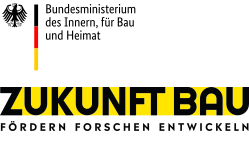The requirements description of the standardization project on "Exchange standards in the building and planning sector" essentially explains the requirements for the information to be exchanged and the message-based exchange. Concrete specifications for the use of Building Information Modeling are not listed. However, there is a lot of information in the BIM models that can be reused. Therefore, the Essential Research Question is how can BIM models be efficiently used to implement uniform federal standards for the exchange and processing of information in building code administrative proceedings. In the proposed research project, the following problems are to be solved: Which verification processes can be supported by BIM models in the form of a container in the context of building application procedures? Which exact requirements and specifications for the BIM models and linked data have to be fulfilled? How can the data quality be checked when submitting or uploading an application? What exactly could a tool for checking look like? Can the application review and processing be supported by a suitable visualization of the BIM models? Does the creation of BIM models for building application procedures require more effort from the architect? Can the additional effort be compensated by simplifying the submission and review?
The requirements for BIM models with regard to information content must be formulated in order to correspond to the information status of today's building application documents and to enable the extraction of information within the scope of the defined use cases. It is useful to decide which information must be integrated in the model at component/room level or consolidated at project level. With regard to the depth of information, the principle of as much as necessary, as little as possible should be followed, taking into account the early planning maturity. The definition is based on existing openBIM standards (IFC, MVD, BCF, MMC) in the sense of a neutral and open data exchange. The integration/use of the models in the context of xPlanung and xBau will be coordinated with the standardization project of the IT Planning Council. The obligation to provide digital planning data as part of the implementation of the INSPIRE Directive "Land Use" will also be addressed. It will be investigated which information from digital development plans can be used as a basis for creating the BIM model of the building application and which data can be transferred from the BIM model to the development plan after project completion. Effects on existing processes will be investigated and discussed with the partners involved. A prototypical software-technical realization takes place, which can be used free of charge by the authorities.
Find out more about the goals and benefits of the BIM-based building application.
Hinweis: Beim Klick auf den Play-Button wird eine Verbindung mit einer RUB-externen Website hergestellt, die eventuell weniger strengen Datenschutzrichtlinien unterliegt und gegebenenfalls personenbezogene Daten erhebt. Weitere Informationen finden Sie in unserer Datenschutzerklärung.
Title: BIM-based building application
Type:
Joint project
Team:
Project partners: planen-bauen 4.0 Gesellschaft zur Digitalisierung des Planens, Bauens und Betreibens mbH, Ruhr-Universität Bochum - Lehrstuhl für Informatik im Bauwesen, Stadt Hamburg - Behörde für Stadtentwicklung und Wohnen, Stadt Hamburg - Landesbetrieb Geoinformation und Vermessung, Land Nordrhein-Westfalen, Stadt Dortmund Bauordnungsamt, CORE Digital Engineering GmbH, Bundesarchitektenkammer, Bundesingenieurkammer, Bund der öffentlich bestellten Vermessungsingenieure, Bundesvereinigung der Prüfingenieure, Verband Beratender Ingenieure, Hauptverband der Deutschen Bauindustrie, Planungsgruppe Drahtler GmbH
